Tom's Guide Verdict
The Keychron Q6 looks great and is built to withstand the apocalypse. It’s available wired or wireless and is highly customizable. However, it does little to warrant such an extreme price differential between itself and the equally as brilliant Keychron V6 (essentially the plastic case version). Its metallic typing sound won’t be to everyone’s tastes, either, and jeepers is this thing heavy.
Pros
- +
Great build quality
- +
Clean styling
- +
Lovely to type on
- +
Available wired or wireless
- +
Highly customizable
Cons
- -
Very expensive
- -
Extremely heavy
- -
Metallic sound divisive
Why you can trust Tom's Guide
I feel blessed that I get to spend my days testing, playing around with and writing about the best mechanical keyboards around. I feel especially lucky when I’m testing boards as good as the Keychron V6, which I reviewed recently and gave 5 stars for its supreme build quality, great sound and stylish looks — all for a super competitive price.
You may, however, be looking on Keychron’s website having a hard time choosing between the V6 and the keyboard I’m covering here, the Keychron Q6. What are the differences? Why is the Q6 over $100 more expensive than the V6? Is it worth the extra spend?
Here are the answers to those questions, in order: 1) it’s made of metal; 2) because it’s made of metal; and 3) probably not. That said, this is still a great keyboard, and you might not be comparing it to its (mostly) plastic sibling anyway. So, keep reading to see our full Keychron Q6 review.
Editor’s note: this review will cover both the wired Keychron Q6 and the wireless Keychron Q6 Max, as the keyboards are mostly the same. We’ll point out key differences along the way.
Keychron Q6 review: Specs
| Keychron Q6: Specs | Header Cell - Column 1 |
|---|---|
| Price | Starts at $195 (assembled) |
| Switches | Gateron G Pro (Q6); Gateron Jupiter (Q6 Max) |
| Layout | Full-size, 108-key |
| Polling rate | 1,000 Hz (wired); 90 Hz (wireless, Q6 Max only) |
| Operating system | macOS, Windows, Linux |
| Backlighting | RGB |
| Paired devices max | 1 (Q6); 4 (Q6 Max) |
| Connectivity | Wired (Q6/Q6 Max); 2.4G/Bluetooth (Q6 Max) |
| Size | 17.6 x 5.4 x 1.29 inches (446mm x 137mm x 33mm) |
| Weight | 85 ounces (Q6); 77 ounces (Q6 Max) |
Keychron Q6 review: Cheat sheet
What is it? A full-sized mechanical keyboard from Keychron
Is it wired or wireless? Available as a wired-only (Q6) or wireless (Q6 Max)
How does it differ from the Keychron V6? A metal case with slightly different internal sound dampening
Get instant access to breaking news, the hottest reviews, great deals and helpful tips.
How much does it cost? It starts at $195, which is over $100 more than the V6
What's good about it? It’s a great keyboard, with supreme build quality, high polling rates and plenty of customization
Any downsides? The price feels steep, it’s mighty heavy, and the aluminum case results in a metallic sound which may not be to everyone’s taste
Keychron Q6 review The ups
Make no mistake, the Keychron Q6 is a seriously good keyboard. It utilizes the same chunky-sided, old school design philosophy as other Keychron boards — an aesthetic I think looks great — and it’s built like a brick privy. Typing is pleasant thanks to its doubleshot PBT keycaps, while its 1,000Hz polling rate suits it well to competitive gaming. As you’d expect from a Keychron mech’, customization options are a-plenty.
Build = overkill
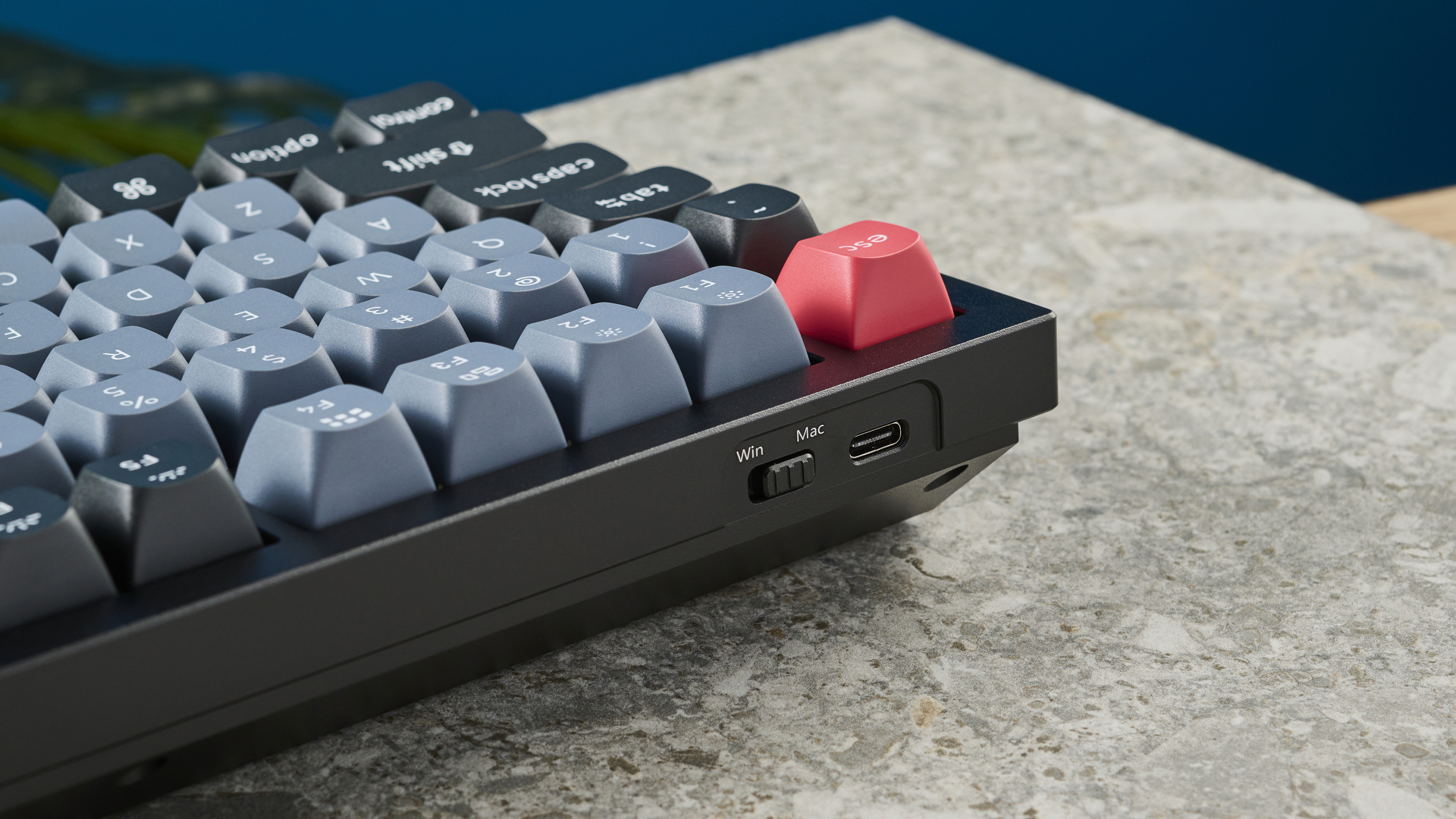
If you’re a fan of Keychron’s now well-established aesthetic philosophy, you’ll find no issue with the Q6 — at least in the Carbon Black colorway we tested. It’s an understated look, with a retro twist from the rounded keycaps. Lined up next to the V6, the Q6 immediately looks the more premium product thanks to the opaque metal case. Keychron also offers this keyboard in navy blue and space gray, if you’d like to venture away from the classic Keychron styling.
Build quality, as you can usually expect from Keychron, is fantastic, although the Q6 takes things to extremes and seems to be designed with a mind to it surviving several nuclear apocalypses. Both the top and bottom case are aluminum, while a steel plate sits under the keycaps and above the PCB. The result is, as you might expect, a build that’s as solid as it gets, with absolutely no flex in the keyboard. If you’re spending the premium to get this over the V6, this is where your money’s going.
Typing bliss

Typing on the Keychron Q6 is, for the most part, lovely, although I’m not a particular fan of the sound (more on that later). The keycaps have a concave design and are constructed from double-shot PBT so they have a nice heavy feel.
Screw-in stabilizers also result in larger keys feeling rigid and secure. Coincidentally, I was also working with a NuPhy Gem80 during testing. Against the Q6, the NuPhy’s plastic spacebar stabilizers felt very poor, which leads to an unsettlingly loose sensation every time I hit Space. This made me appreciate the Q6’s metal screw-in stabilizers even more, although these are also a feature on the V6.
I tested the Q6 using the Gateron G Pro Brown switches, which are a pleasure to type on thanks to their tactile feedback, without being too noisy for office use.
| Keyboard | Words per minute (WPM) | Typing accuracy |
|---|---|---|
| Keychron Q6 | 91 | 90.30% |
| Logitech MX Keys Mini | 93 | 90.78% |
| Apple Magic Keyboard (2019 MacBook Pro) | 101 | 90.14% |
| Pete's rolling averages (all keyboards) | 86.5 | 88.53% |
As you can see by my typing times above using 10fastfingers.com, I was able to field a pretty quick typing speed of 91 WPM on the Q6, dropping just under 10% of words. This is 10 WPM short of my personal best but around 5 WPM faster than average.
As a full-size board, the Q6 will be great for anyone who regularly has to punch in numbers, perhaps for their job. Obviously, it’s also great if you just like a larger board and want a proper full size (as opposed to a 96% layout like the Asus ROG Strix Scope II 96.)
To the polls
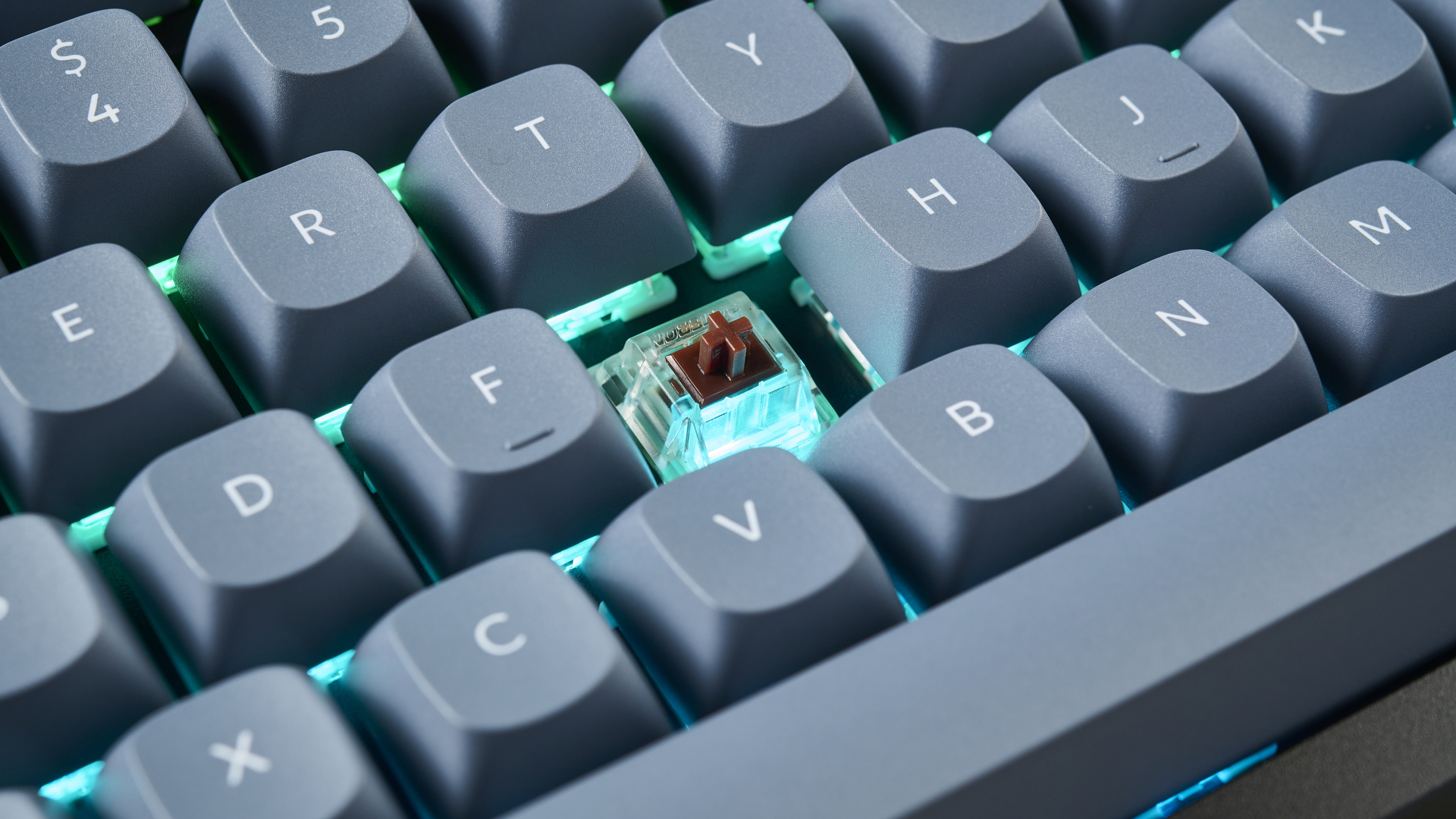
The Keychron Q6 polls at 1,000Hz in wired mode. This means the keyboard scans itself 1,000 times per second to detect for keystrokes — the faster this is, the less latency you’re likely to experience between pressing a key and the press being registered. In wireless mode on the Q6 Max, though, polling drops to 90Hz.
The Gateron G Pro (Q6) and Gateron Jupiter (Q6 Max) switches found in the pre-assembled keyboards have a pre-travel rating of between 1.4 and 2.6mm, according to Gateron, meaning somewhere within that range they actuate (where the switch hits the point to trigger the keystroke, which is then picked up by the keyboard’s polling scans to execute the stroke). This gets a little complicated, especially the difference between operation and actuation in non-linear switches (brown/blue) — Gateron doesn’t list separate figures for these — but suffice to say, nowhere within that actuation range is particularly troubling.
Long story short, while it isn't a gaming focused keyboard, the Q6 is fast enough to game on (when wired, at least).
If you want the fastest actuation and lowest response times, consider a keyboard with magnetic Hall effect switches, like the MelGeek CYBER01, which can have its switch actuation customized and set as low as 0.1mm.
You've got options
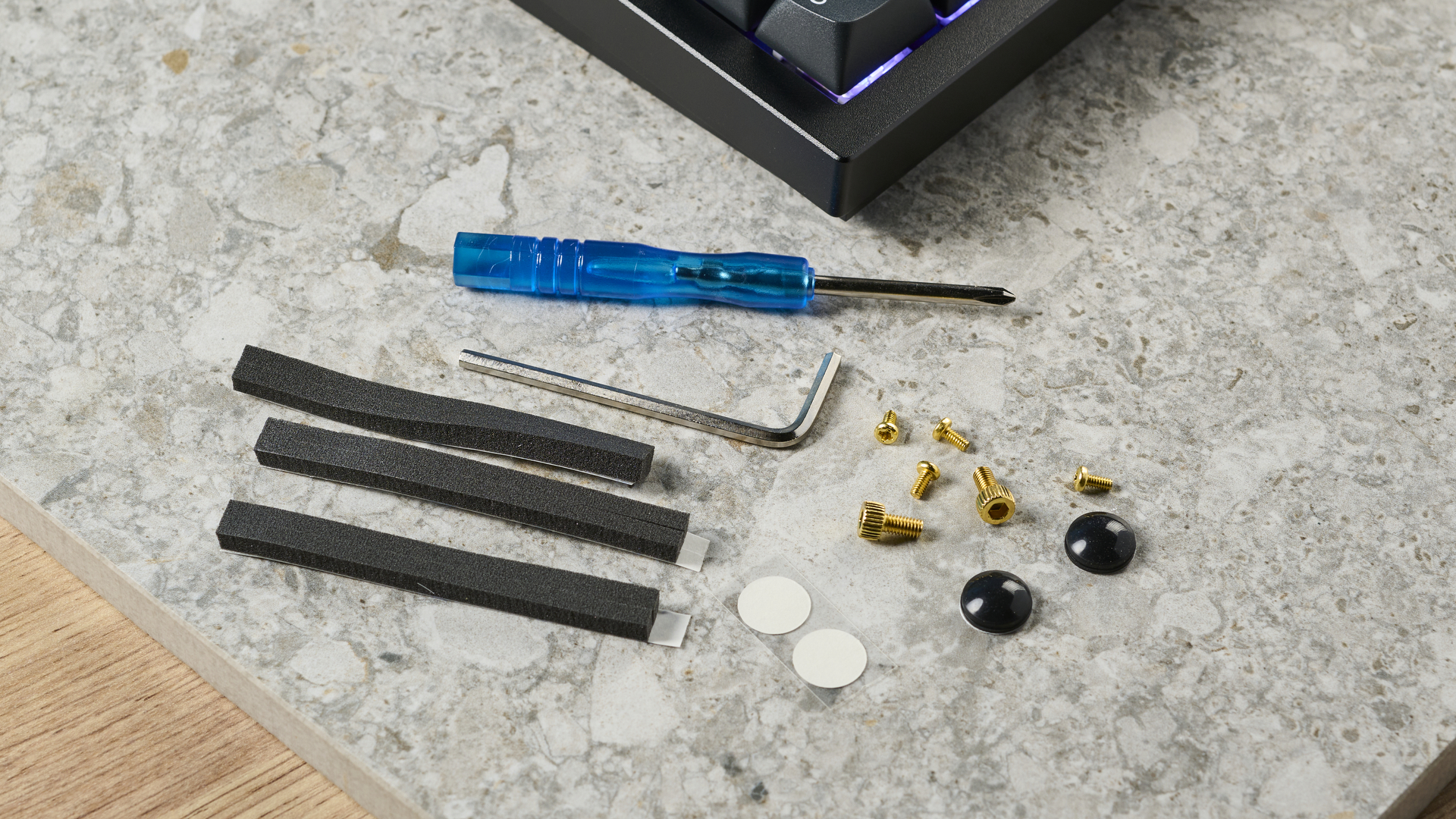
The Keychron V6, as with most Keychron boards, is very mod-friendly. Keychron offers the board as a barebones version without switches or keycaps, which is ideal for custom builds. Even if you purchase the pre-assembled version, it’s hot swappable so you can fit your own switches. The keyboard also comes with everything you need to take it apart fully, plus some spare parts if you feel like tinkering with it.
This is one of Keychron’s QMK keyboards, meaning it uses the VIA remapping software. This open source software will give you a high level of control over key maps, macros and RGB lighting, but is browser-only at the time of writing, and hates all browsers except Chrome.
Keychron Q6 review: The downs
While the Keychron Q6 is a premium keyboard with many enviable features, it isn’t perfect. Obviously, there’s the price: this thing starts at $195. There are also some serious considerations you should take into account before you buy around its sound and weight.
It'll cost ya
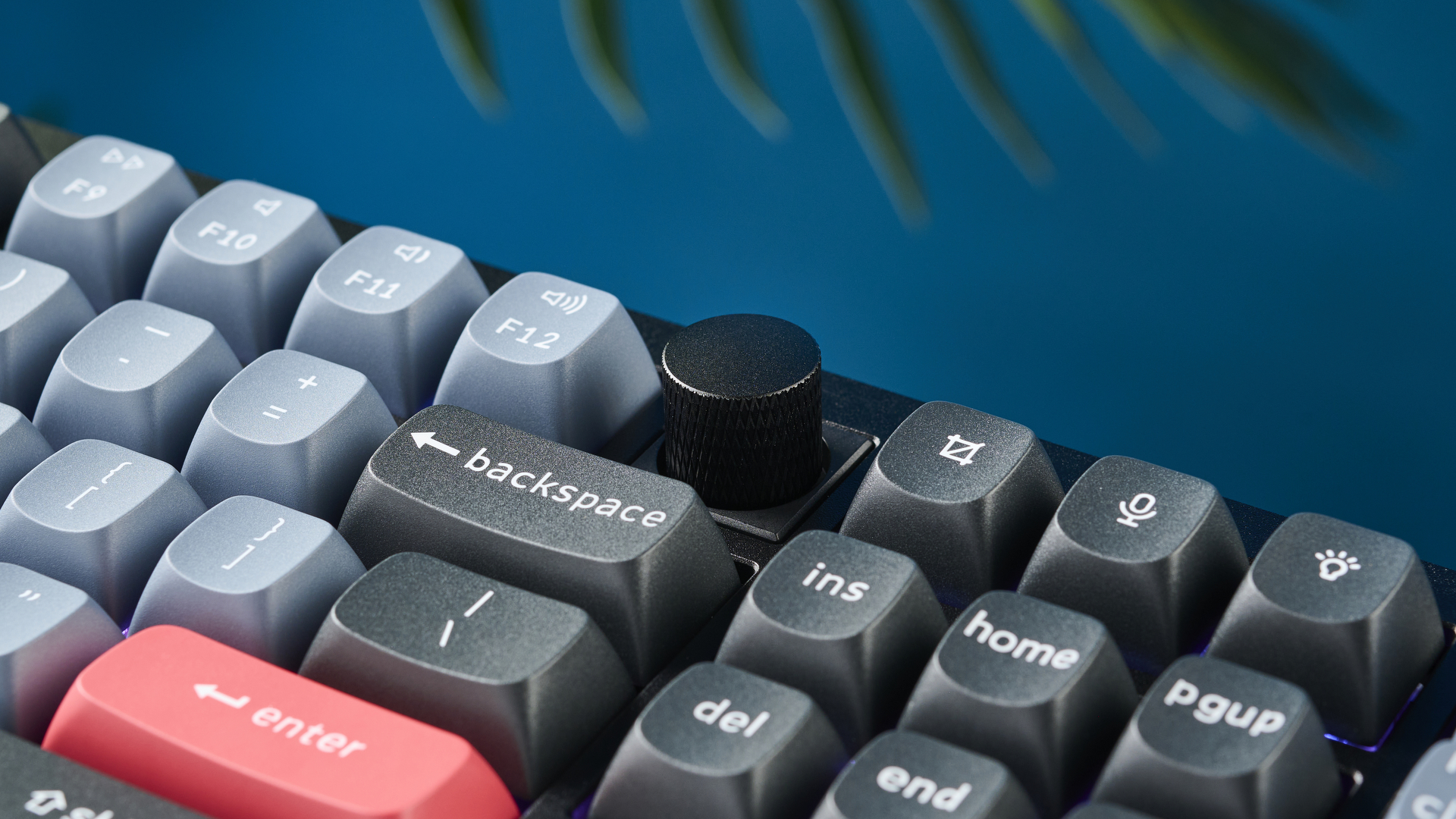
The Keychron Q6 starts at $195 for an assembled no-knob version, with other models pushing well over $200. This is a similar price to other full size boards like the Corsair K70 Mk. 2. It feels a hell of a lot of money for a keyboard essentially the same as the Keychron V6, which goes for under $100. I’m really not convinced that a couple of aluminum plates justifies a more than $100 premium, unless you desperately want a metallic typing sound (see the section below).
The price difference between the Q6 and Q6 Max is negligible, with the fully assembled knob version of the Q6 Max being only around $10 more than the equivalent Q6 version. If you are interested in this board, I’d definitely recommend going for the wireless Q6 Max — you get all of the benefits of the wired mode and 1,000Hz polling rate, and the Max is even a little lighter despite having a battery, a fitting segue to move onto weight.
Heavy metal

The Keychron V6 was already a heavy board, weighing 47.5 ounces. Thanks to its metal design, the Q6 takes things to extremes — I’m pretty sure you could use this thing to fell a tree. The wired board tips the scales at 85 ounces, while the wireless Q6 Max weighs in at 77 ounces (surprising, given the latter adds a battery). Isn’t aluminum supposed to be light?
This isn’t a huge issue — this is not a board designed to be taken out and about. If that’s what you want, you should instead be looking at a smaller keyboard like the Keychron V1, or a low profile keyboard like the NuPhy Air75 V2 or Logitech MX Mechanical Mini. Still, if you have issues with your hands or wrists, or with lifting heavy objects, the Q6 is one to avoid.
Plastic fantastic?
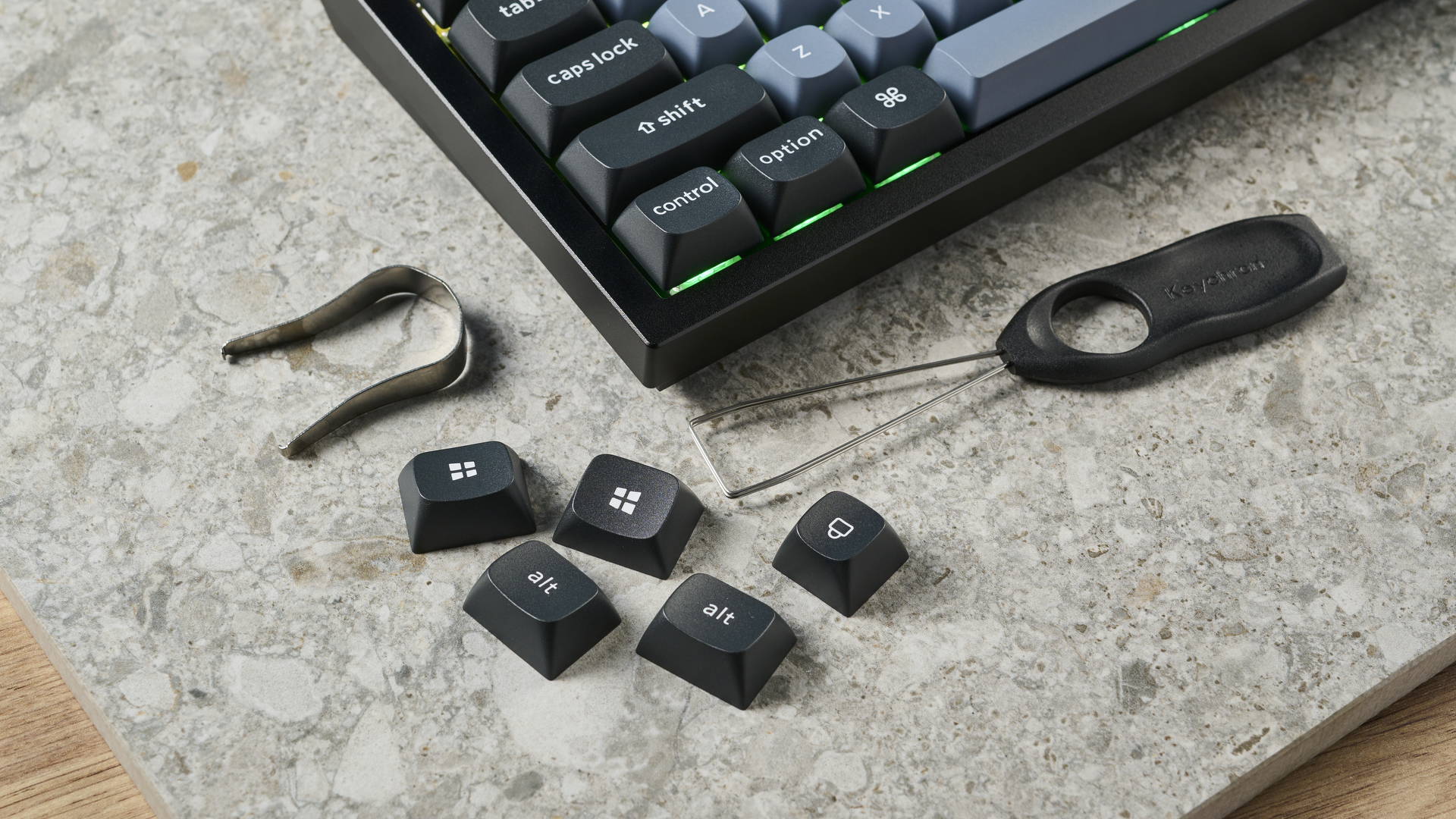
Sound is a personal preference, but it’s worth knowing how the metal construction and internal damping affects the sound you’ll get from the Q6, as you’ll find it differs from keyboards which utilize more plastic — detrimentally, if you ask me.
The Q6’s metal case and steel PCB plate combine to mean that, at least if using quiet linear switches like the Gateron G Pro Red switches we tested, all you hear is the sound of the keycaps hitting metal. This results in a metallic thud, rather than a plasticky clack. Thanks to hefty amounts of internal insulation, there’s no metallic echo, so no hollow, pinging sound. It just sounds like plastic hitting metal, because that’s literally all that’s happening.
Obviously, metal construction is good for longevity and bragging rights, but there is a lot to be said for the sound of plastic. Retro mechanical keyboards of decades past were made of plastic, so that’s the sound many enthusiasts are familiar with, enjoy and seek (myself included). Keychron seems aware that metallic sounds aren’t ideal, as it has fitted the Q6 with double gaskets between the aluminum top and bottom cases in an attempt to reduce metallic impact noise as much as possible.
In short, if you want the classic retro mechanical sound, opt for the V6. If you’d like a metallic sound, choose the Q6. Remember, though, changing to louder and/or clicky switches like the Gateron G Pro Blue will add an extra switch-based layer of sound on top of the metallic noise.
Keychron Q6 review: Verdict
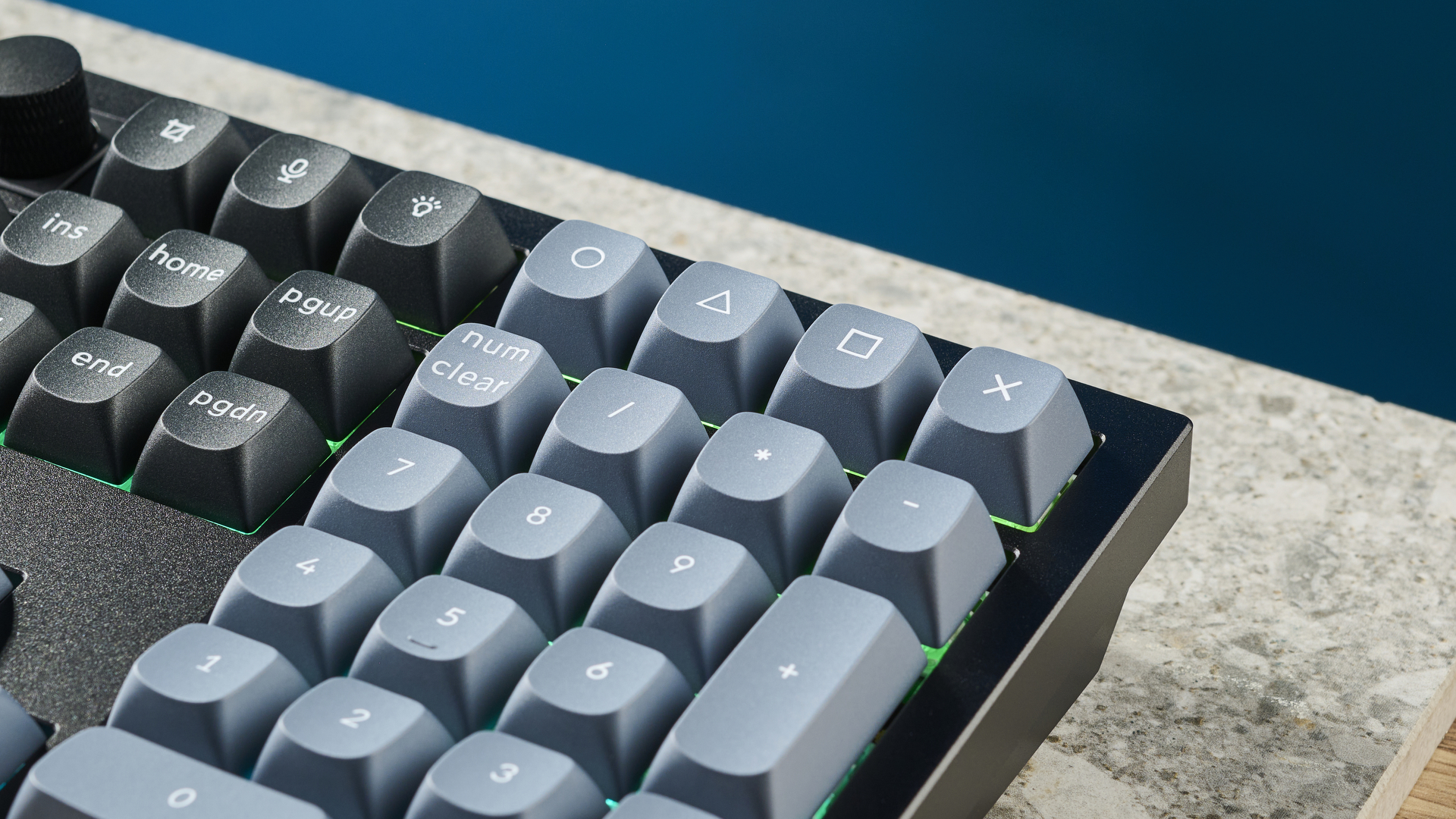
As with many Keychron keyboards, there is very little actually wrong with the Keychron Q6/Q6 Max. My biggest gripe is the price, and the fact that this thing costs over $100 more than the fabulous Keychron V6.
At the time of writing, the wholesale price of aluminum is 0.08 cents per ounce. The Q6 is 37.5 ounces heavier than the V6, which is worth around $3 in aluminum. What does the other $97 get you? For most intents and purposes, the Q6 and the V6 are the same aside from weight, sound and $3 worth of metal. Obviously, the Q6’s build quality is better, but the V6 is still built phenomenally. The styling and typing experience are more or less the same too, so I really don’t think it’s worth the extra spend for the Keychron Q6.
This will be especially true if you don’t want a giant slab of metal sitting on your desk for accessibility reasons, or if you think the acquired taste of a metallic typing sound will take a bit too much acquiring for your liking. The metal will live on, but not on my desk.

Peter is a Senior Editor at Tom's Guide, heading up the site's Reviews team and Cameras section. As a writer, he covers topics including tech, photography, gaming, hardware, motoring and food & drink. Outside of work, he's an avid photographer, specialising in architectural and portrait photography. When he's not snapping away on his beloved Fujifilm camera, he can usually be found telling everyone about his greyhounds, riding his motorcycle, squeezing as many FPS as possible out of PC games, and perfecting his espresso shots.

